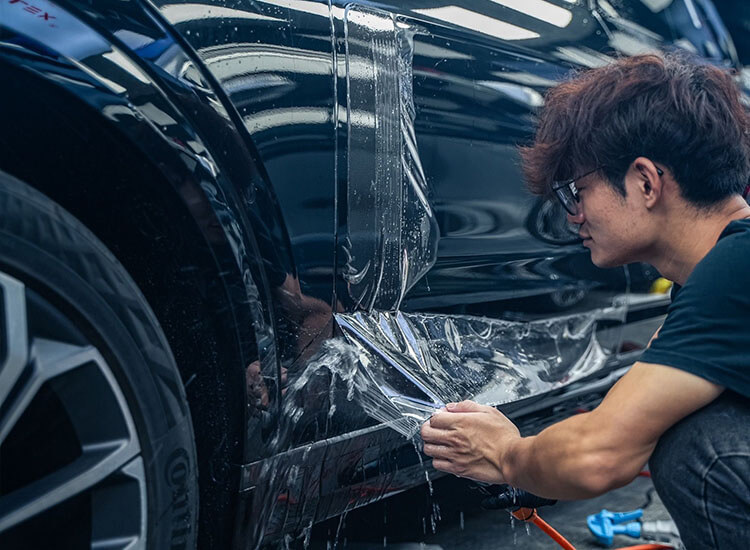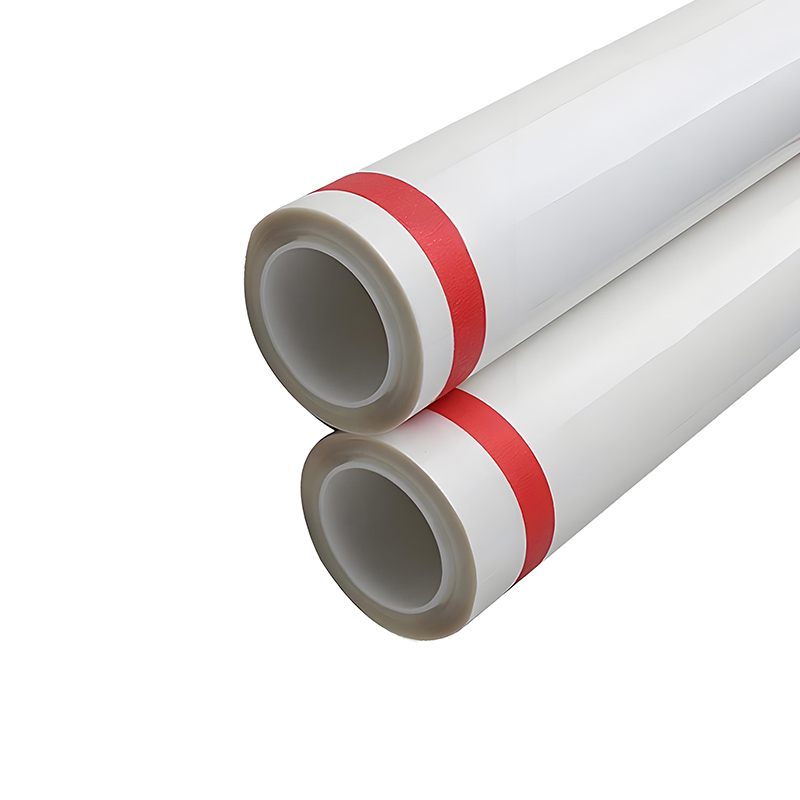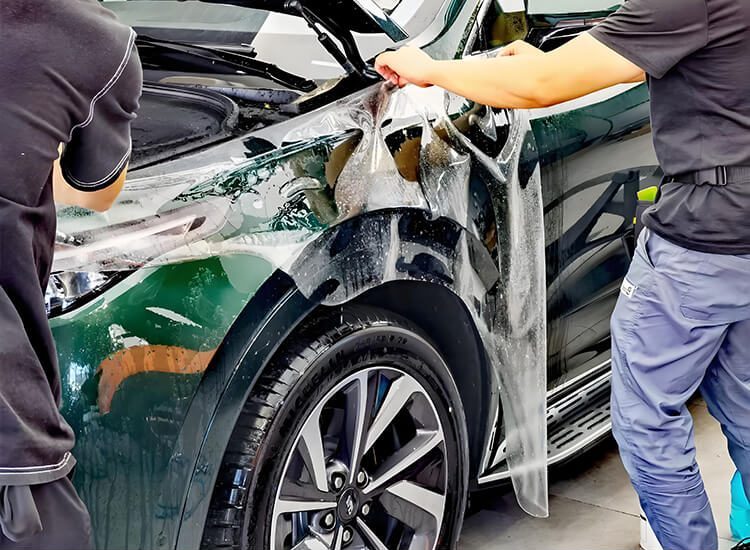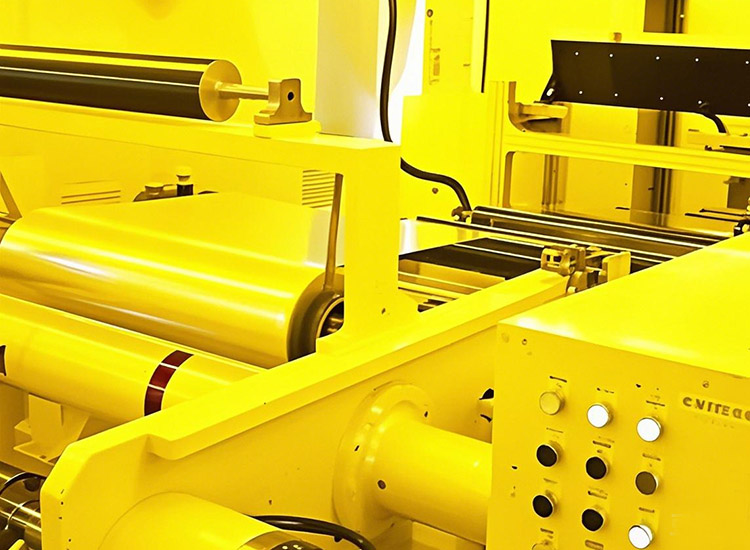7 Common Myths About Paint Protection Film (PPF)
Paint protection film (PPF) has become one of the most popular ways to preserve your car’s paint, but with that popularity comes a lot of misinformation. If you’ve been researching PPF, you’ve probably encountered conflicting opinions and confusing claims. In this article, we’ll break down the most common myths about paint protection film, separate facts from fiction, and help you make an informed decision about whether it’s right for your vehicle.

Myth #1: Paint Protection Film Is Just a Marketing Gimmick
Some skeptics argue that PPF is nothing more than a cleverly marketed product. However, this couldn’t be further from the truth. PPF is a scientifically engineered material, typically made from thermoplastic polyurethane (TPU), that protects your vehicle’s paint from rock chips, scratches, bug splatter, and UV damage. Many professional auto detailers and car manufacturers recommend PPF, especially for luxury or high-performance vehicles. For a comprehensive understanding of Automotive PPF and how it works, you can explore the industry’s foundational principles.
Myth #2: PPF Will Damage Your Car’s Paint
A common PPF misconception is that it can ruin your car’s paint over time. In reality, when installed correctly by a certified professional, paint protection film actually shields your vehicle’s original paint and preserves its value. Modern films use advanced adhesives that are both secure and removable without causing damage. This makes PPF an ideal choice even for leased cars or classic models. You can read more about the composition in Paint Protection Film Materials to understand why they’re paint-safe.
Myth #3: All PPF Products Are the Same
This is one of the most misleading beliefs. There are several Types of Paint Protection Film, including TPU, TPH, PVC, and even sprayable PPF. Each type has different performance levels, clarity, flexibility, and durability. High-end TPU films often offer self-healing properties, while PVC films are less durable but more budget-friendly. Choosing the right type depends on your goals, budget, and vehicle usage.
Myth #4: PPF Is Only for New or Luxury Cars
While luxury vehicles and brand-new cars often get PPF treatments, this film is beneficial for any car that spends time on the road. Daily drivers, off-road vehicles, and even older cars can all benefit from added protection. PPF prevents wear and tear that lowers your vehicle’s resale value. It’s especially worth considering if you drive in areas with gravel roads, road salt, or heavy traffic. Even if you’re on a tight budget, you can explore options based on your needs through this guide on PPF Coating Cost.
Myth #5: Ceramic Coating Is Better Than PPF
Ceramic coatings are often compared to PPF, but they serve different purposes. While ceramic coatings offer great hydrophobic properties and make your car easier to clean, they do not protect against physical damage like rock chips or deep scratches. PPF, on the other hand, provides a physical barrier. Many car owners even apply ceramic coating on top of PPF for combined protection. If you’re curious about the difference, visit this in-depth comparison of Types of Paint Protection Film to see how each layer serves a unique role.
Myth #6: PPF Needs Constant Maintenance
PPF is designed to be low-maintenance. Unlike waxing or polishing, once installed, high-quality PPF requires minimal upkeep. You should avoid abrasive cleaners and high-pressure washers directly on the edges, but regular car washes are perfectly fine. Some newer PPF options come with hydrophobic top coats that repel water and dirt. For daily drivers or commercial vehicles, knowing how much paint protection film you need can help you plan your maintenance better.
Myth #7: PPF Doesn’t Last Long
Another widespread myth is that PPF wears out in just a couple of years. In reality, top-tier paint protection films can last between 5 to 10 years, depending on the brand, installation quality, and exposure to elements. With proper care, they retain their clarity and effectiveness for a long time. For durability stats and real-world examples, check out Paint Protection Film and how long different types are designed to last.
Paint protection film is more than just hype—it’s a proven way to extend the life and beauty of your car’s finish. By debunking these myths and focusing on the facts, you can make a smarter decision tailored to your car, lifestyle, and budget.

Frequently Asked Questions (FAQs)
1. Is paint protection film worth it?
Yes, especially for preserving resale value and protecting your car from daily wear and tear.
2. What’s the difference between ceramic coating and PPF?
Ceramic coating offers chemical protection and ease of cleaning; PPF provides physical protection from scratches and chips.
3. Does PPF yellow over time?
High-quality TPU films are resistant to yellowing and discoloration.
4. Can PPF be applied to older cars?
Yes. As long as the paint is in good condition, PPF can protect and enhance older vehicles.
5. How do I choose the best PPF for my car?
Compare durability, clarity, cost, and warranty options to find what fits your needs.
6. Is it better to apply PPF or repaint a scratched panel?
In most cases, applying PPF after minor touch-ups is more cost-effective and protective than repainting.

